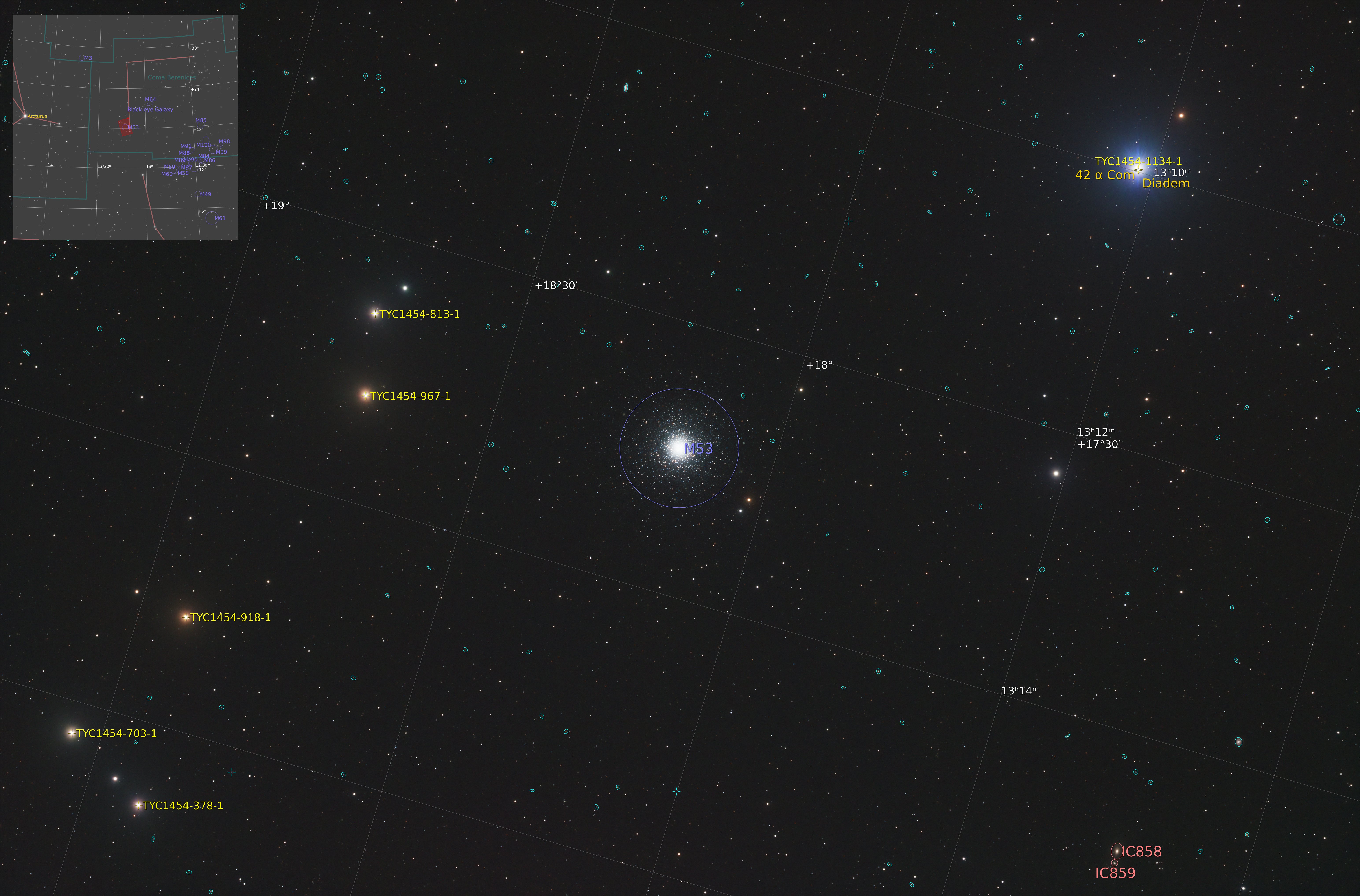M53
NGC 5024
This globular cluster was discovered in 1775, but it is a truly ancient object, 12.6 billion years old, only 1 billion years younger than the Universe itself. Another fact that makes it outstanding is that there are many first-generation stars in this cluster. As in, they were not formed from matter generated by previous stars, but are the first concentrations of mass.
The images were made during two cold April and May nights but sadly we only got to process this data now, in August 2023.



Technical details
| Details | |
|---|---|
| Telescope | Skywatcher Esprit 100ED (f/5.5) |
| Filter | Astrodon LRGB Gen2 E-Series |
| Coma corrector | - |
| Field flattener | Skywatcher Esprit (1x) |
| Camera | QHYCCD 268m, -20°C, Mode 1, Gain 56, Offset 30 |
| Resolution | 6178x4072 (cropped) |
| Light frames | R: 18 (300s), 1h30m |
| G: 18 (300s), 1h30m | |
| B: 16 (300s), 1h20m | |
| 4h20m total | |
| Flat frames | 16 each (3s, per channel brightness) |
| Darkflat frames | 32 |
| Dark frames | - |
| Bias frames | - |
| Location | Kalkalpen Nationalpark, Austria |
| Local time | 2023-04-21 20:24 - 02:13 (31 frames) |
| 2023-05-21 21:33 - 23:26 (21 frames) | |
| Field of View | 2°23' x 1°34' (rotation 106°) |
| Image Center | 13h12m55s +18°10'03 |
We also have 24 luminosity frames, but due to the excessively long exposure used (300s), that data was not used as it messes up the star colors in a way that can’t be corrected by calibration.
Processing
- Cosmetic correction
- Calibration with flats and darkflats, cropping overscan areas
- Registration
- Normalized Scale Gradients
- Integration (GSD)
- ABE (1st degree)
- RGB combination
- BXT
- NXT
- Curves